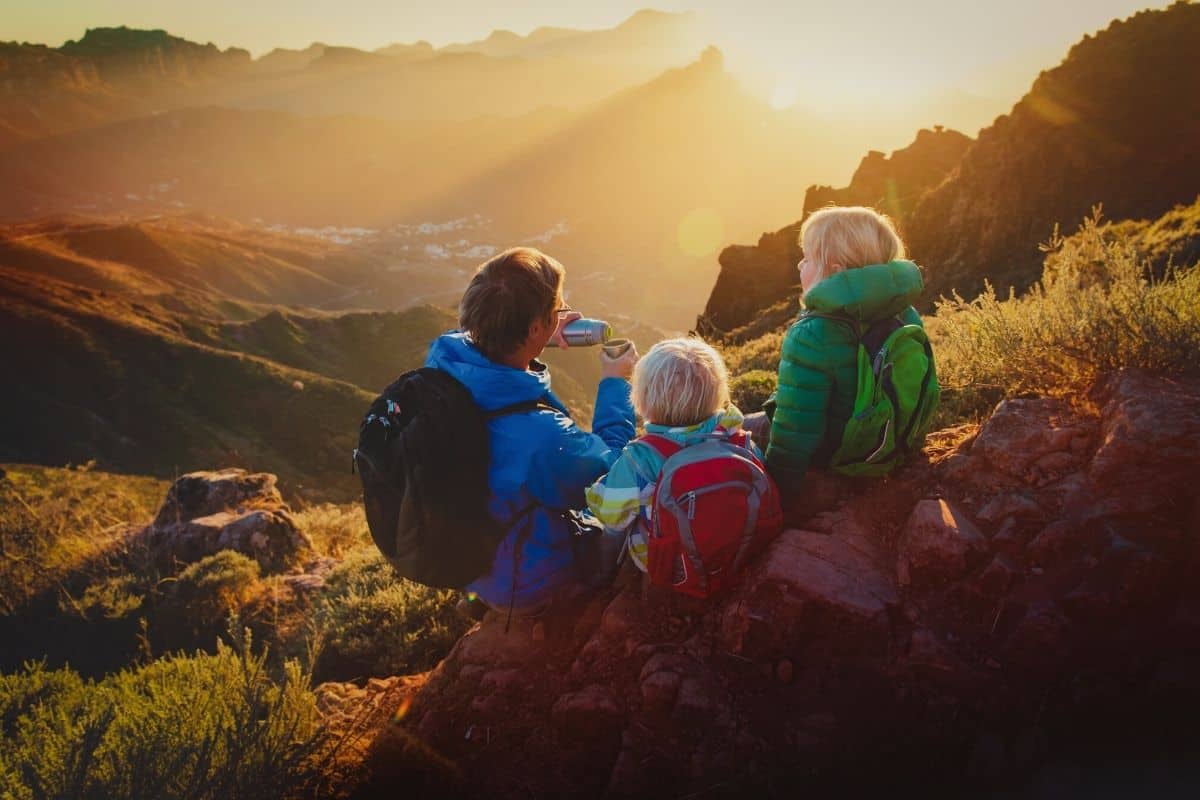The good news: enjoying the great outdoors is feasible even with several young children in tow. Hiking with kids can be a wonderful experience for both parent and child.
The not-so-good news: to ensure a great outing, and as few temper tantrums as possible, you need to put in a little extra work, plan ahead, and expect the unexpected.
Always start the younger ones out on easy, flat trails and for short distances until they become acclimatized. Pick hikes that have plenty of features to keep them interested such as waterfalls or play parks. Have regular stops to rest and refuel with snacks and water before they get tired and grumpy!
Make sure the hike is fun. Play a game like “I spy” or make a scavenger hunt. Keeping kids interested is key to everyone having a memorable day out, and reducing the risk of meltdowns. Keep reading our full article for more helpful hints and tips!
Table of Contents
Fun With the Little Ones!
Introducing a new member to your family is full of new experiences: their first smile, first word, first step. If you’re already an avid hiker, then you may also be looking forward to the day when you can enjoy your first hikes together too. It’s time to start creating memories!
How soon you get out on the trail should be entirely based on how comfortable you are with the concept, although some other parents do advise getting your kids out on the trail as early as possible to fast-track their development. Certainly getting out into the fresh air and beauty of nature can do wondrous things for sleep-deprived, stressed new parents. You just need to know how to prepare correctly.
Family hiking can be a tad intimidating at first, even if you are an experienced hiker who has spent years preparing for yourself.
We’ve pulled together as much wisdom as possible and packed this page with a bounty of tips to help you get your little ‘uns on the right trail, with as little stress (and as few tantrums) as possible. Whether you are new to hiking yourself or have reached the summit of every peak in your state, we have got you covered.
Planning
Choosing a Trail
When selecting a hike, we recommend that you first and foremost consider these two things;
- How easy a hike it is
- How engaging the hike will be for your little ‘uns
When starting your kiddos out, pick something easy with little, if any, incline. Essentially, nothing too long or strenuous for little legs. Hikes in places close to home with properly paved paths are a good starting point.
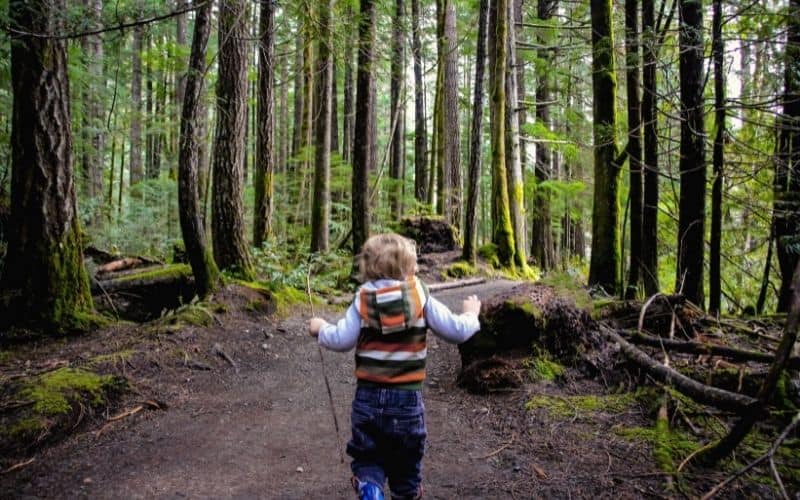
You never know at what point a meltdown may occur due to tiredness, injuries from falling over, or just being plain uninterested in hiking (these things can also befall your kids).
As such, don’t expect to reach your trail goal every time, so traveling for several hours on the road may end up being a waste of time if you end up being back in the car faster than you can say “Ethan stole my stick – I’m bored. I want to go home”.
Once your kids become more accustomed and capable, you can begin to venture further from home, or up the difficulty a little bit (but remember to go slow).
Hiking for kids is all about the experience, so choose a trail that has some impressive features along the way such as a waterfall, lake, or kids’ play park to keep them occupied. It’s also a good idea to have an ultimate destination in mind that will give them some motivation to keep their little legs moving (although it may not necessarily reduce the occurrences of “are we there yet?”).
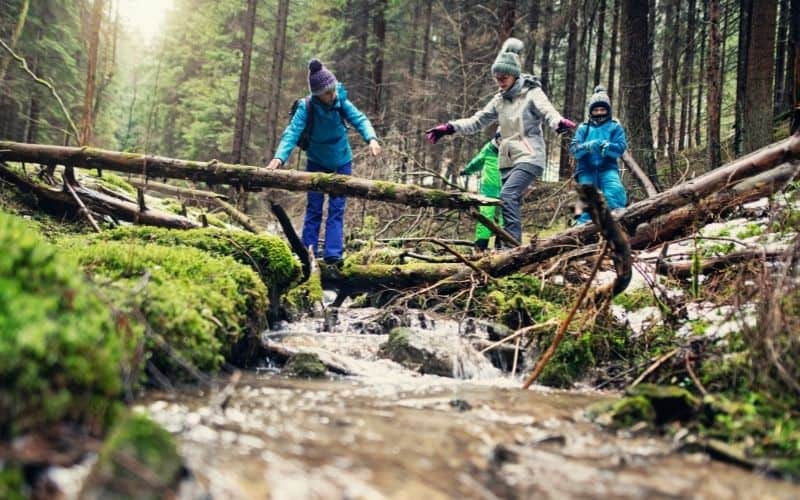
Destinations can be as simple as a beautiful view of a waterfall or arriving at a picnic area with fire pits for grilling. Alternatively, check to see if there are any restaurants, rope courses, or play parks where you can finish the trek at.
Whenever hitting the trails with your kids, remember to work with time and not against it, so plan for lots of it.
Kids are mini-scientists, adventurers, and super-heroes rolled into one. They’ll want to get down on their hands and knees and explore, to chase that butterfly or skip stones across the lake. Let them explore the natural world and remember that the goal is not so much the destination but the experiences along the journey.
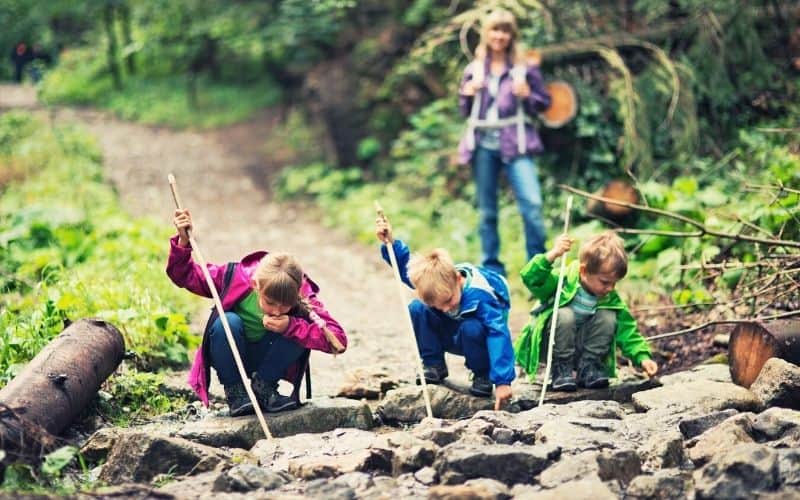
Finally, when it comes to planning, get your child involved and let them help plan your trip. Involving them in the decision-making will make them more engaged and invested in the hike. Hopefully, you can remember just as well as I do those proud moments of being able to help mom or dad in their decision-making.
Plan Ahead & Be Prepared for Anything
In our view, successful parenting lives on the maxim – be prepared for anything. While preparation is essential for any hike (child involvement or not) when kids are involved be prepared to expect the unexpected.
There is a Norwegian saying “Ikke dårlig vær. Baer dårlig klær” – “There is no such thing as bad weather, only bad clothing.” Check the forecast, and dress yourself, and your kids appropriately for the conditions (learn how with our hiking clothing guide).
Learn how to layer clothes for maximum protection from the elements, and bring rain gear, gloves, and hats for out on the trail even if the forecast is saying it’s going to be a beautiful day. It can be super chilly early in the morning, and the local geography may create microclimates.
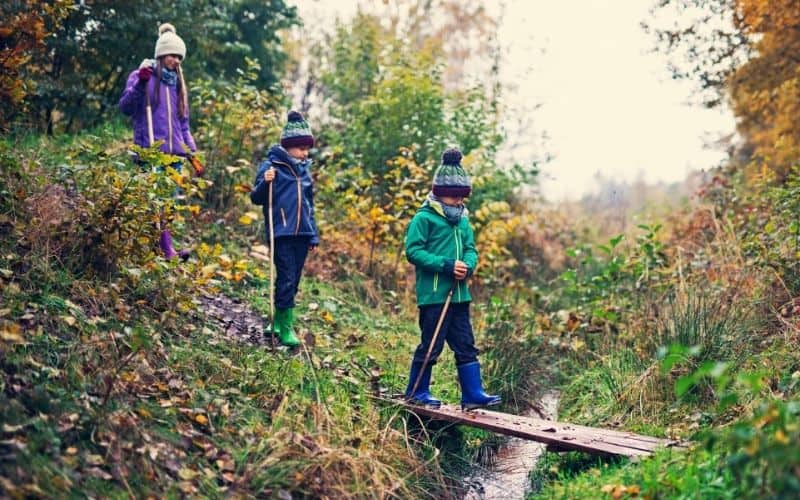
Rain attire also helps to keep out the wind which is a much greater contributor to hypothermia than just being wet alone.
Remember that kids get cold much more quickly than adults! Another lifesaver (hopefully, not literally) is bringing an extra set of warm clothes for each member of your brood and leaving them in the car for your return. I would wager that at least one will be wet or muddy (or both)!
Proper clothing for protection from the elements is one part of the equation, protection for your kid’s feet is another. Depending on the terrain you will be walking on, ensure your children have adequate hiking shoes – if the path is paved, short, and flat then let them wear what is comfortable be it sandals or rubber boots, for more “rugged” terrain you may want to invest in some hiking boots for kids.
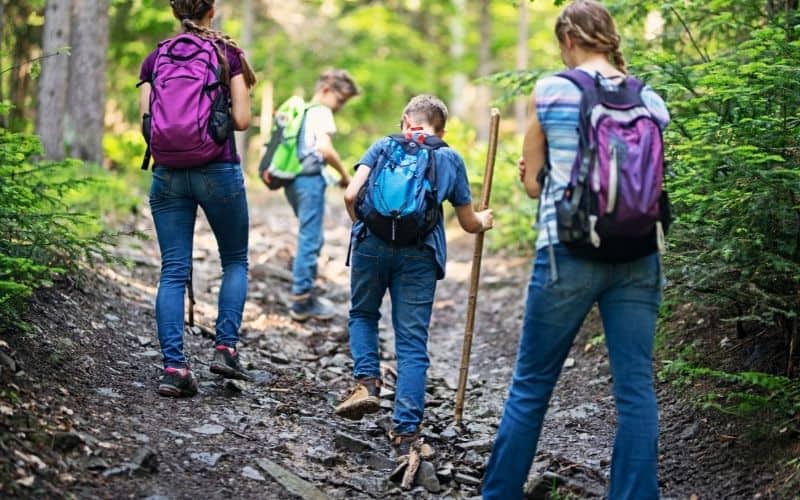
Toddler hiking gear and hiking gear for babies are also now widely available and can make the difference between a happy trip and a miserable one for all concerned.
What to Pack
It is a universally acknowledged law of physics that whatever is needed at that precise moment in time will be at home, probably sitting out in plain view so that you wouldn’t forget it, be it the fruit boxes or your kid’s favorite hiking stick.
Meanwhile, the five peanut butter and jelly sandwiches (sans crusts) make it home after a day out hiking. Your six-year-old is coming to a unilateral (and unbinding) resolution that they’re “icky” (at least for today).
There is no getting around the fact that even if your kids have their own packs, you will at some point likely be carrying 99% of your kids’ gear.
https://www.instagram.com/p/BW4xj4rlo-X/?utm_source=ig_embed
After loading up with the essentials, you’ll need to pack smart to find the balance between what is good to have versus how much you can physically (and comfortably) bring with you. We’ve come up with a list of essential and good-to-have packing items below.
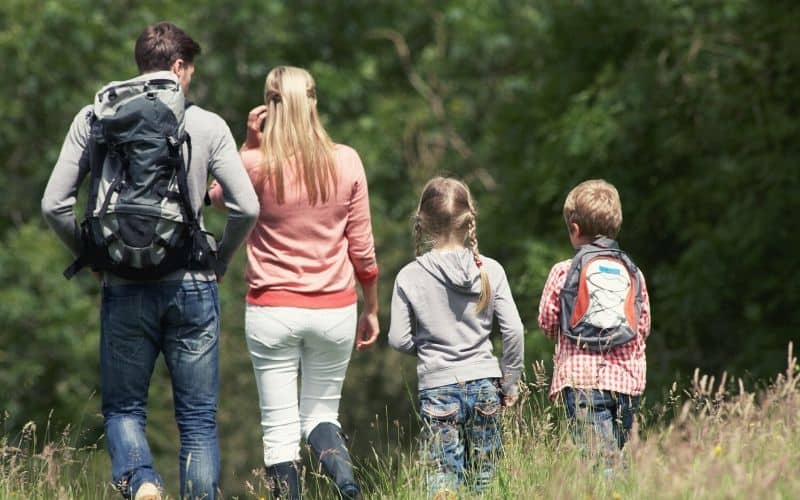
Packing Essentials
- The ten essentials, I would argue if you are wandering around a city trail you can probably forgo the emergency shelter
- An extra set of clothes for each child. Children have been known to spontaneously fall into mud, puddles, streams, etc. which had nothing to do with their grinning sibling standing over them. Rather than continuing the family hike in wet socks or pants, you can get them into something dry. Also, if the weather takes a turn for the worse, layering clothes should help keep little ones warm
- Bring snacks and water (granola bars, kid-friendly trail food, extra water bottles) and plenty of them!
- A safety whistle for the kids (just make sure and teach them when and how to use them)
- Patience
Good to Have
- Wet wipes are a godsend in any situation, out on the trail is no different. They are great for calls of nature, mud removal, and cleaning up after mealtimes
- Lipbalm
- Binoculars, a magnifying glass, and kids’ outdoor or field guides. Set off their inner botanist or zoologist by allowing them to examine and understand nature
- A camera to capture those special moments with a photo or two
Going on an Adventure: Hitting the Trail with Your Tots
So you have everything in hand, and you are on your way for your first hike. At this point, you need to get into the right mindset. Three key things should help;
- Let your goals be fluid, adjust to the situation and let your kids’ enjoyment and comfort be the ultimate decider
- Pack patience, be prepared to answer a lot of questions, or sit and wait for that woodpecker to return to his nest. Remember these may be your kids’ first experiences of these things
- Have fun!!!
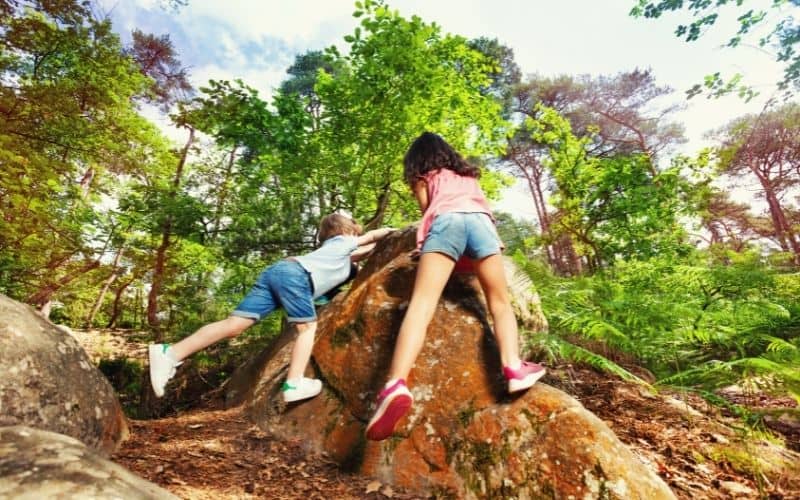
What Makes a Hike Magical for Kids?
Any hike that can bring out a kid’s sense of exploration and adventure is guaranteed to be magical. The beauty of hiking is that any old trail can be wondrous if you encourage them to explore and use their imagination.
Assigning roles to your kids is a great way to empower your children further. Start by assigning one of the kids as the group’s hiking leader. Kids love to feel in charge and with a child’s sense of imagination, you could end up with some pretty magical experiences.
If you are hiking with more than one child, make sure and rotate the leadership role often to prevent arguments, or your four-year-old may try and stage a coup. Include yourself in the leadership rotation from time to time and make sure the leader always has a compass and map for “navigation”.
If you are hiking with multiple kids, then assign them other roles when they are not in charge. Roles, such as Park Ranger (in charge of spotting birds and wildlife) will help to give them a sense of purpose and reduce arguments.
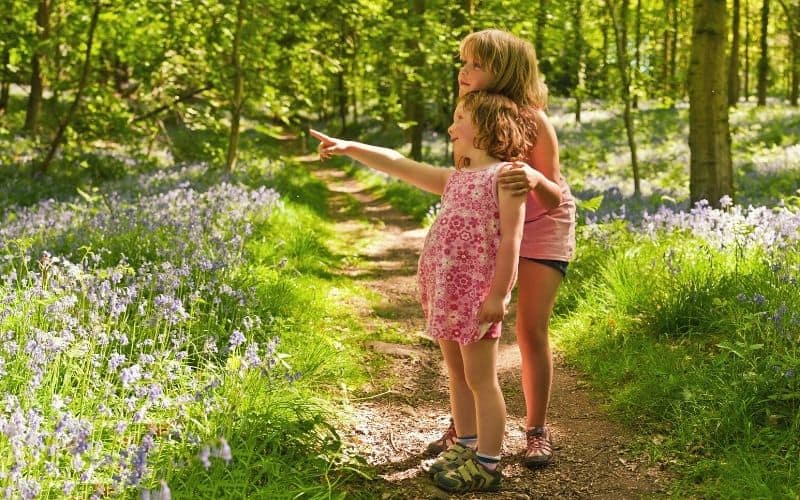
Lastly, kids love spending time and interacting with their parents, so this is a great opportunity to take this time in nature to be involved by participating in their games, answering their questions, and telling them stories.
Things to Keep Them Entertained
Hiking must be fun! Especially for kids…
If you can keep the little ones entertained and having fun, you will already have won 90% of the battle to keep them motivated and pushing on down the trail.
Games are a great way of doing this! Print out a nature scavenger hunt list or create your own by asking your kids to find something furry, or brown, or slimy… Ewwww.
Pretend you are on a safari tracking exotic wild animals and you want them to be on the lookout for any wildlife. Then, of course, there is the classic road trip game ‘I spy,’ which will forever work well to focus little minds away from whatever it was that they were just grumbling about.
Use your imagination and you and your kids can come up with plenty more games to play. Maybe, each trail marker is a powerup that gives the first one to touch it superhero powers or my favorite growing up was playing “Pooh Sticks” whenever we came across a bridge. As soon as we rounded a corner and saw the bridge there was a mad dash between my siblings and myself to find the best stick to win (find out how to play “Pooh Sticks” here)!
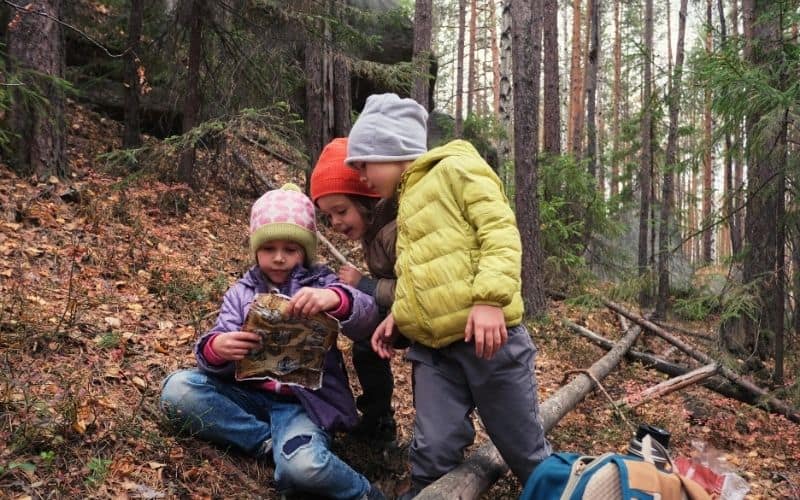
Kids enjoy singing, so perhaps start belting out one of these suggestions from FamilyCanTravel with your little ones!
Kids also love to learn, and being in the great outdoors there is an infinite number of entertaining ways to appeal to their sense of curiosity and adventure and make things fun.
It’s an excellent idea to bring along things like magnifying glasses or binoculars especially if they are accompanied by a kid-friendly outdoors workbook. Teach them which plants and berries to avoid, why do squirrels store their nuts or anything else they ask (or you can think of).
You can use this time to teach them to be observant, and how to spot signs of wildlife (animal tracks, a feather on the ground, the remains of a bird’s eggshell or nest). Kids become super focused on finding the next animal discovery if you show them that there are cool things to find all around you!
Let your kids bring their friends or go hiking with other families. Sometimes hanging with your parents can be a bit of a drag, and who doesn’t love having fun with their buddies!
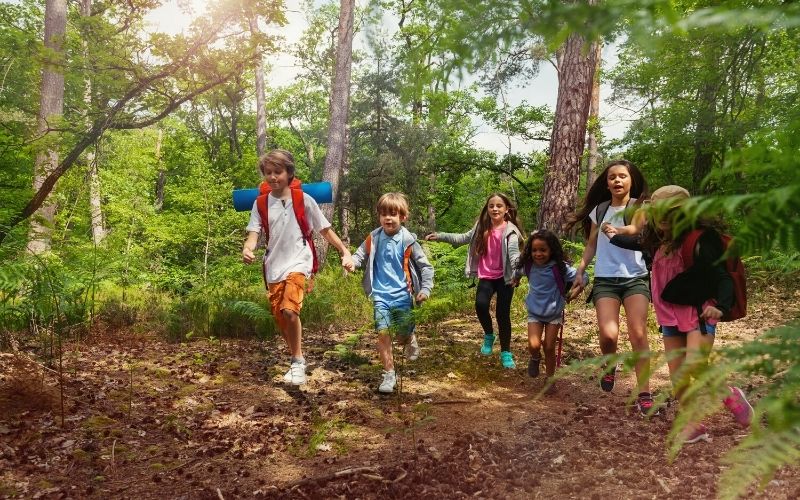
Why not tell a story to keep your kids entertained? Tell them an old classic or get creative and tell them a new one based on what you see around you. Once you get the story rolling, you can get your kids to pitch in with their own details or create a dramatic twist to the storyline! If it doesn’t disturb the wildlife too much, consider having your own little marching songs for you all to sing and keep those little legs swinging forward.
How to Avoid (or Deal With) a Meltdown
The kids are having a great time, the hike is going super well, and all of a sudden one of the kids has a breakdown mid-trail. Sometimes these tantrums can be avoided, sometimes not so much and it can take some creative solutions to get your child back on track (literally) and happily (or less sullenly) moving along again.
It is often a good idea to start hiking early when everyone’s energy levels will be higher and you can avoid the crowds. To prevent grouchy, tired kids, make sure and take frequently planned energy stops where you can dole out the water and a few snacks. By planned we mean intuitively getting your kids to rest before they start acting up and indirectly telling you they need a rest.
These can also be a great motivational tool to keep them moving if they know that they’ll be stopping at that waterfall just up ahead for their favorite snack!
Use these rest opportunities as more than just feeding time, give them praise, and use positive reinforcement to let them know how well they are doing or how strong and fast a hiker they are (even if they are not). Kids need encouragement (especially if it’s their first hike) and it’ll make them all the more motivated to keep pushing on.
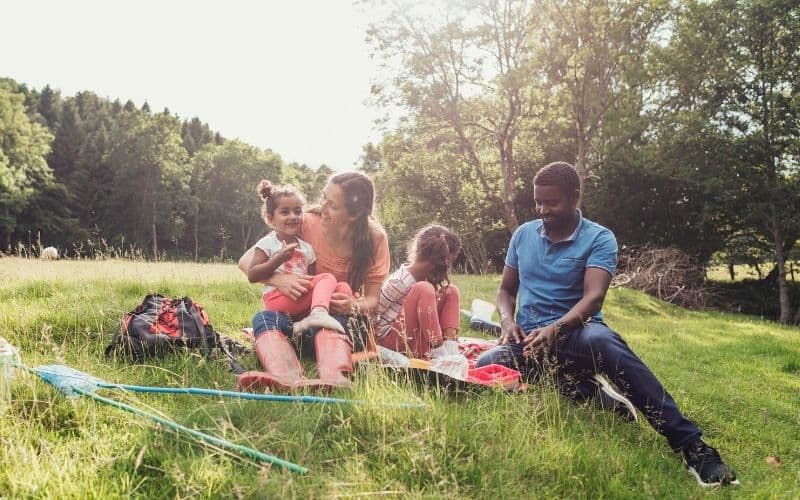
The elements are the most surefire way for a lovely trip to turn into a fraternal civil war. If it’s a bit cold and wet, make sure to keep them dry, warm, and well-fed. If it’s hot make sure to keep them hydrated and cool: hats, lots of water/juice, and how about a spray bottle filled with water or make a sponge necklace to help keep them fresh.
Kids just aren’t as resilient as adults, and even a child who doesn’t usually whine may become grouchy if these basic needs aren’t met.
Distraction, distraction, distraction. Tell a story, make a joke, or break out the snacks and treats if it looks like it’s away to go south. However, ultimately, know when to call it a day – they may be screaming blue murder that they’re not tired, but you know better.
If the “littlies” are beginning to get more irritable then don’t frog march them onwards to the intended destination – give them praise on their hiking skills and get them home for some food and rest, before the real tantrums begin. You can always climb to the top of the mountain another day.
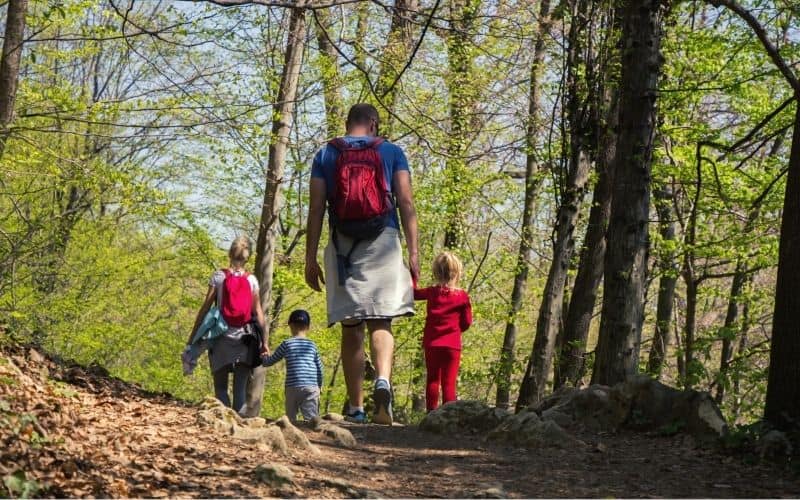
General Tips for Hiking with Kids
In addition to the advice on planning, entertainment, and how to deal with a stroppy toddler, here you can find a few more general tips for taking a hike with your children.
- While I may have said make time your friend, you should also still keep track of it. Knowing how far the hike is meant to be, and how much progress you have made so far, can help you estimate if you are still likely to make it to the destination before your little one runs out of stamina. Be prepared to alter your plans.
- Get your kids used to hiking by starting them out young, and making it a regular thing. Before you know it, hiking becomes a regular weekend activity that they love.
- Always triple-check your gear list – your kids are dependent on you till they are old enough to pack for themselves (and probably could still use a hand at this point). Make sure you don’t forget anything important.
- Unless your child is still an infant, let them walk part of the way. Start them out small and let them walk a bit further each time. It can become pretty exhausting if your child expects you to carry them everywhere all the time, so let them learn to love to walk.
- Always try to be one step ahead of the elements, and get them covered up before that rainstorm or have them slathered in sunblock before the sun reaches its zenith.
- Teach kids to respect the wilderness through the central tenets of Leave No Trace. As much fun as it is to try and pull that half-broken branch off the tree, teach them to leave it be and only pick up sticks that are lying on the ground. Our children are the future stewards of this planet – if we teach them all to respect it, it may one day be a much better place.
- Always take your trash home with you and dispose of it correctly. You can go one further and get your kids to collect any litter they see along the way.
- You arrive, and the trail is closed due to a mudslide, or it’s a lot steeper and more challenging than you expected. Learn to roll with the punches and have a plan B, plan A may be out the window, but you can still have fun with your family!
Age-Related Hiking Tips
Hiking with Babies & Infants (0-12 Months)
Hiking with a baby? All mothers and fathers know this is more accurately described as ‘packing’ your child for a hike, and it all comes down to deciding on the best/right way to carry your infant.
The choice here is largely a front sling versus a backpack-style baby carrier which should be adjusted for the perfect parent/baby fit. Although, for infants less than six months you will have to swaddle them in front until they are big enough to be able to ride comfortably in a backpack-style carrier. You can check out REIs guide on how to best select a child carrier.
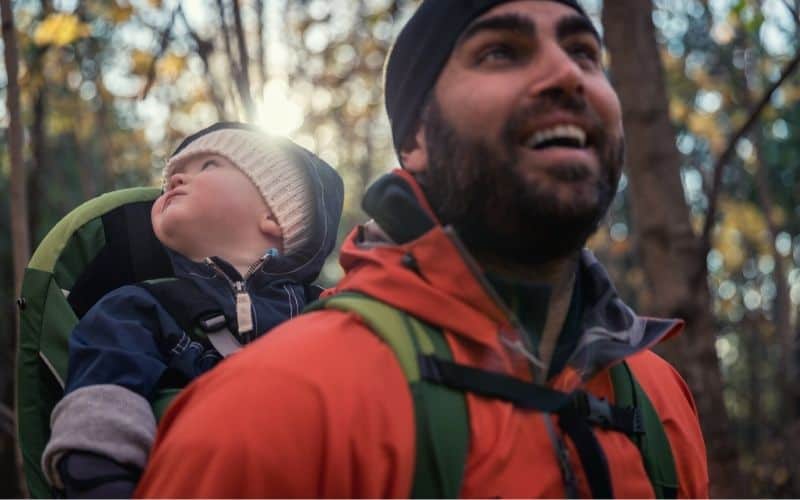
For both of your comfort, make sure and let both of you get used to the hiking baby gear before you hit the trail (I must admit to spending some evenings with my son strapped to my chest while prepping dinner). And when you’re ready, start with a “baby hike” to break yourself in gently.
Of course, in addition to carrying your child, you are also going to have to find room for all the other bits and bobs you’ll need…
Make sure and pack plenty of diapers and waste bags for packing all the used ones up until you can dispose of them properly. Pack plenty of milk or formula (powdered formula will help to save on weight) and a separate, clean water bottle to use only for water.
Don’t do too much too soon, ease into things by limiting the first couple of hikes to no more than a couple of hours.
Watch out for the elements, babies are not yet developed enough to be able to regulate their body temperature adequately, so be wary of the cold, wind, and rain and always plop a wide-brim sun hat on their head to protect them from the sun.
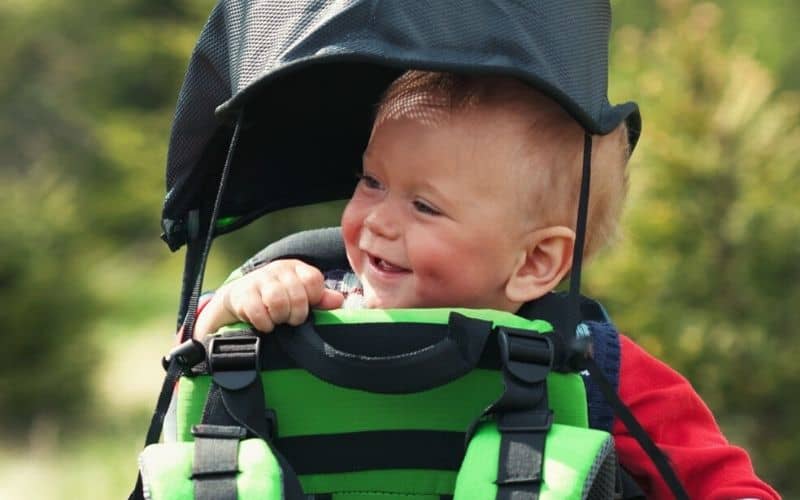
You’ll quickly notice that the rolling hiking motion will put most kids to sleep, so plan your baby hikes for their typical nap time to avoid messing up their regular sleep cycle.
Hiking with Toddlers (1-4ish Years)
So the little one has begun to walk! Great, you are now entering the phase where they can do some real hiking of their own! However, they are still going to be heavily reliant on you to carry them for extended periods, so you’ll need to be flexible.
Here, depending on the type of trail and your personal preference, you could go for a sturdy off-road stroller or continue with a hiking pack for a toddler.
As your toddler is still not going to do much in the way of walking, I wouldn’t worry about needing boots just yet, a pair of sneakers are just fine. As you are hiking along, keep a lookout for relatively flat and easy-going sections of the trail where you can let them wander on their own.
The average toddler is magnetically attracted to dirt and will take every opportunity to get dirty if given, so don’t expect your child to stay clean for long and just embrace it. Be sure to pack plenty of extra clothes, particularly pants and socks for when they get wet or find their way into a mud puddle.
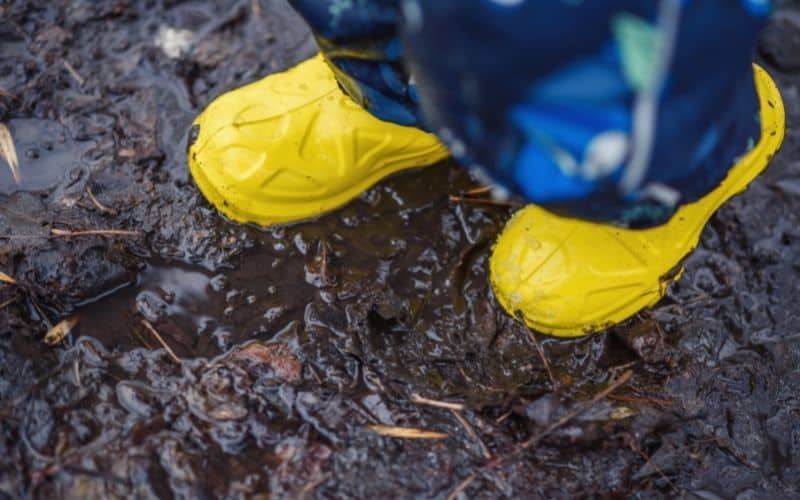
Hiking with Grade Schoolers (4ish-12 Years)
On approaching preschool age, you will now have yourself a fully-fledged hiker, and can finally retire your child carrier. At this age though, they are also capable of running off – no matter how much of a super-parent you are, you can’t keep your eyes on your kids 100% of the time. So it’s a good idea to lay down the rules before you hit the trail.
At this point, give your kids a whistle (attach it to their backpack or attach it to a lanyard around their neck) and make sure they understand that they are only to use it in emergencies. If they become separated from you, they are to STOP, stay put and blow the whistle in a burst of three until someone finds them.
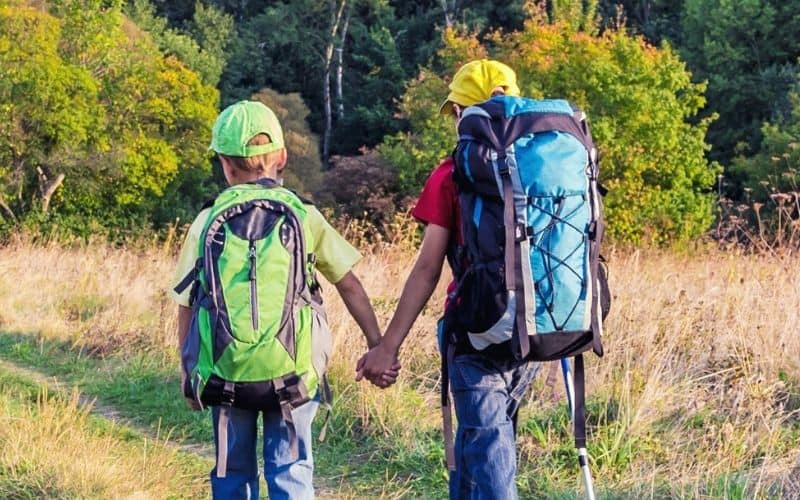
To try and prevent such an ordeal, it’s best to teach your kids to always stay within sight of mom or dad, at least when they are starting out. As they become older, and more experienced hikers, they may be allowed to disappear out of sight for short periods.
Nevertheless, ideally still tell older kids to never go too far without stopping to wait for their dawdling mom and dad and, of course, if they reach a trail marker or fork in the trail, to STOP and wait.
It’s around this age that you can begin teaching them how to read maps, start with simple cartoon trail maps, and advance to their own topographic maps as they mature. Also, learning about Leave No Trace principles will help them respect the wilderness they are exploring.
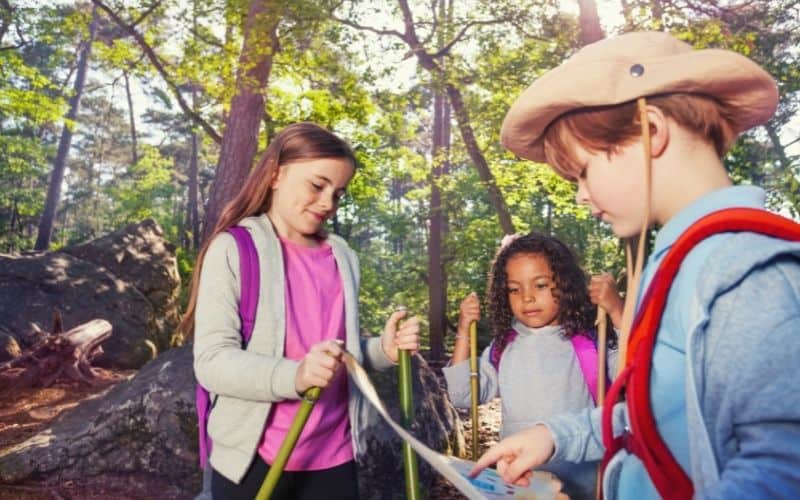
Kids First Aid
While you should always come prepared with a hiking first aid kit in a suitable carry case, as per the 10 hiking essentials list, check to make sure that it has some child-friendly features and create your own DIY first aid kit by supplementing with the following:
- Children’s sunscreen
- Children’s Tylenol and/or ibuprofen
- Liquid antihistamine
- Compeed pads for blisters
- Adhesive bandages
- Calamine lotion for bug bites
- Tweezers to remove splinters, ticks, and needles
- Plenty of anti-bacterial wipes
- Epipen if your child has allergies
Fun Times With the Whole Family!
We hope you’ve enjoyed our article and found some useful tips and advice for outdoor adventures with your baby, infant, or even teenager. Even the most screen-obsessed kids can end up falling in love with all nature has to offer, they might just need the right persuasion!
If you enjoyed this post or have any questions or additional tips of your own, please drop us a line in the comments box below. And if you’d like to share it with your friends, share away!
